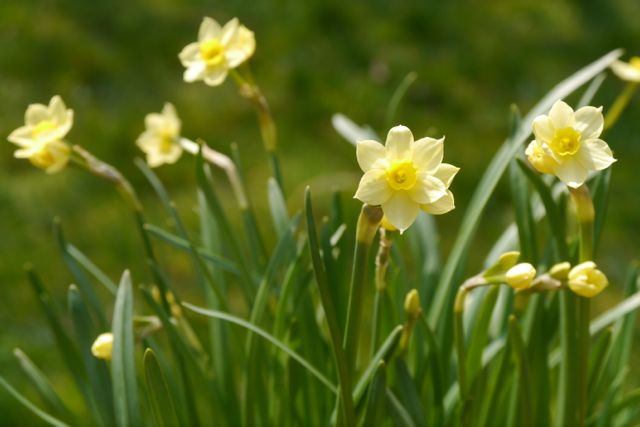
Cornus mas
Flowers! Colour! Scent! Even though it’s freezing cold the days are getting longer and the landscape is no longer uniformly grey and brown. There are shrubs and bulbs doing their thing: Fluffy chick yellows from Cornus mas, mahonia and fosythia. The most fleeting wafts of scent from the small flowers of shrubby honeysuckle, sweet box, viburnums and Skimmia ‘Kew Green’. Grow with early dwarf narcissi like ‘Tete a Tete’, ‘Jenny’ and ‘Jack Snipe’. The palest most subtle pinks Daphne ‘Jacqueline Postill‘ looks lovely with Crocus tommasinianus, palest blue with bright yellow stamens. A few brave bees might be tempted out by some of these.

Oudolf field at Hauser and Wirth in Somerset. Spring maintenance.
Lay waste to the borders: give deciduous grasses a close cut, or pull out dead growth from evergreen grasses. Cut back seed heads and top growth on summer and autumn flowering herbaceous. Trim lavender. I visited the ‘Oudolf field’ at Hauser and Wirth in Somerset just recently and they were working through the beds cutting back closely, see photo.

Mahonia with early bee
Shrub cut, coppice and prune: Just as they come into growth cut back the long whippy growth of dogwoods (cornus) and willow (salix) back to the main stem or even the ground so that they will put on lots of new coloured new stems for next winter. Prune gooseberries, red and white currants (but not blackcurrants).

Daphne ‘Jacqueline Postill’
Seed germination relies on soil temperature, so get a head start by covering the seed bed with horticultural fleece for a couple of weeks. Cloches are well worth the investment, not only does this warm the soil but protects seedlings from the weather. Sow hardy annuals, broad beans, garlic, lettuce, spinach, peas, salad onion, parsley, dill, parsnips and early potatoes. There’s still time to sow some tender vegetables such as aubergines, peppers, chillis, tomatoes – early March.

Crocus tommasinianus
Last of the bare-root planting: Plant roses and other shrubs bare root while you still can. It is well worth using a dusting of mycorrhizal fungi to the roots, you will see the difference within a year.



